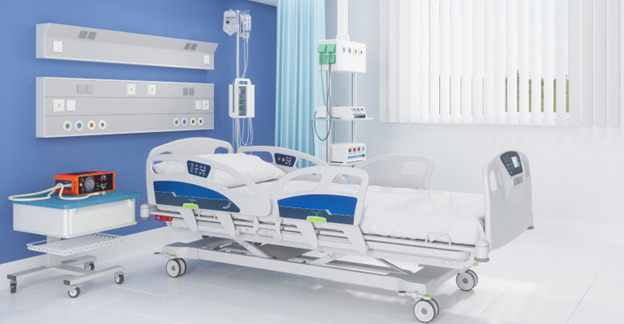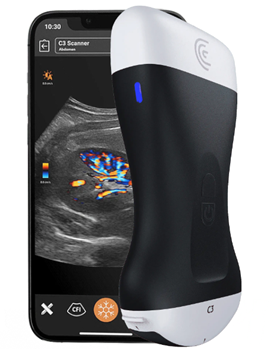“The pandemic has reminded all of us how much we all depend on nurses, from our first days to our last, and why all countries must invest in nurses now and for the future.”
This is the quote of Tedros Adhanom Ghebreyesus, WHO Director-General, who addressed the International Council of Nurses (ICN) in 2021 amid the heat of COVID-19.
Supporting nurse practitioners, the largest component of the health workforce, is crucial, especially in the face of a nurse shortage. Even before the pandemic, the global shortage of nurses was at 5.9 million, and by 2030 this number can reach 13 million, according to ICN’s report.
Much of the technology being implemented in the healthcare sector is geared towards streamlining flows and easing the workload for nurses and medical professionals. And in this article, we are going to look at nursing tech trends worth paying attention to in the next year.
1. Telehealth nursing
The pandemic shifted the adoption of telehealth services in overdrive. In 2020, as much as 52% of healthcare visits happened virtually. And although this figure dropped to 38% in 2022, it is still higher than pre-pandemic, which means that the technology is here to stay.
Telehealth nursing allows registered nurses to carry out many of their responsibilities in a virtual environment, like triaging patients based on their needs, monitoring patients remotely, collecting critical health data, managing chronic diseases, and more. For that, telehealth nursing leverages a variety of digital health tools and technologies:
- Video conferencing platforms that enable face-to-face communication in real-time via video chat. Nurses can check in with a patient, provide basic consultations, explain pre- and post-op procedures, etc.
- Store and forward technology promotes asynchronous communication by exchanging messages, images, MRIs, scans, photos and is ideal for dealing with non-urgent issues.
- Remote patient monitoring involves medical wearables and electronic devices that nurses can use to keep tabs on a patient’s vitals like heart rate, blood pressure, glucose level, and more.
2. Electronic health records
Electronic health records (EHRs) are not a new trend — at this point, custom EHR solutions have gone mainstream since they provide nurses and medical professionals with quick and easy access to crucial patient information.
However, EHRs will continue to evolve in the years to come as healthtech startups at the forefront of the healthcare revolution are looking for ways to expand EHRs’ capabilities. For example, Northwell Health and Allscripts teamed up to develop a new voice-enabled, AI-powered EHR system that would help with data entry and provide most relevant data-driven insights.
3. Smart beds
Thanks to the advancements in the Internet of Things (IoT) technology, medical beds have been reimagined. Modern hospital beds are equipped with smart sensors and can monitor multiple data points like a patient’s vital signs and movements, notify medical teams in case of any sudden changes, optimizing the workload for nurses. And the potential of smart beds in improving patient care is immense — a study demonstrated that the use of under-the-matress and bedside monitors reduced blue code events by as much as 86 percent.
Given the benefits, many modern hospitals consider smart medical beds a worthwhile investment. By 2039, the smart beds market is expected to reach USD 1,166 million, growing at a CAGR of 8.6%.
Source: Omnia Health
4. Smart IV pumps
Infusion pumps that maintain a constant flow of medication infusion came into use over 40 years ago. And although they quickly became the standard of care, automated pumps are still associated with 54% of all adverse drug events and 56% of medications errors.
To solve these issues, intravenous infusion (IV) pumps technology is constantly evolving. The manufacturers of smart pumps are now working to address the challenges of infusion setup, manual programming and consistent fluid delivery. Today’s smart IV pumps have built-in security features like drug error reduction software (DERS) with pre-set limits for specific medications and bespoke drug libraries. To further improve usability and promote adoption, advanced IV pumps now come with touchscreens, icon-based navigation, remote management and other features.
5. Artificial intelligence
Every 73 days the amount of medical knowledge doubles, so staying on top of that has become an uphill battle for healthcare practitioners. To bridge the gap between available data and actionable insights, experts predict the increased role of AI and machine learning. With almost unlimited processing power and the ability to learn over time, advanced ML algorithms can provide data-driven clinical decision support to nurses and doctors by detecting patients at higher risk of certain diseases, improving diagnosis, and predicting patient outcomes.
According to research from Drexel University’s School of Biomedical Engineering, the latest AI breakthrough, ChatGPT, can help healthcare professionals spot early signs of dementia with 80% accuracy by capturing and analyzing meaningful characteristics of word use, sentence structure, and meaning.
6. Portable medical diagnostics devices
From digital stethoscopes to pocket-sized ECGs and ultrasounds, portable diagnostic tools support the future of healthcare delivery while making the lives of nurses easier. Despite the small size, modern diagnostic devices are powerful tools that can be used to assess patients and share the readings with physicians for further analysis. This is particularly important for patients in rural areas and remote regions with the lack of healthcare professionals.
For example, Philips Lumify, Vscan Air, Clarius, Kosmos are all handheld point-of-care ultrasound (POCUS) devices that help nurses perform tasks in various clinical settings. The article published in the European Journal of Cardiovascular Nursing suggests that having nurses to perform point-of-care ultrasound when physically examining patients to assess for early signs of decompensation and fluid overload proves to be feasible, provides extra information, and improves the quality of care.
Source: Clarius
7. Innovative nursing education
Technological advancements not only transform nursing practice but also nursing education and training. Nursing schools and universities are increasingly leveraging tech-enabled tools to improve and modernize core curriculum and prepare competent and highly skilled professionals.
While online learning has already become the new norm, simulated learning environment is another tech trend that would shape nursing education in the nearest future. Augmented and virtual reality simulations allow students to develop cognitive mastery and hands-on skills in a safe environment. One example of immersive technology used for high-quality nursing simulation experiences is UbiSim’s VR platform.
The future of nursing is here
Nursing technology is advancing by leaps and bounds, dramatically changing patient care delivery along the way. From telehealth nursing solutions to smart beds and automated IV pumps to portable ECGs and handheld ultrasounds, technology is driving new efficiencies and helps nurses provide better care, which translates into better patient outcomes and lower costs.
Elinext is here to help healthcare institutions and medical companies better support their nursing and medical staff through robust and secure healthcare software. Our experts have successfully delivered a sophisticated diagnostics solution, a document management system for clinical trials, a senior care service platform, medical practice and billing software, and more. Contact us to take the first steps towards your next healthcare project.











